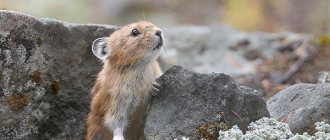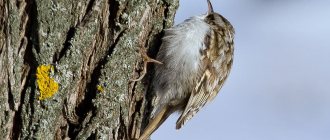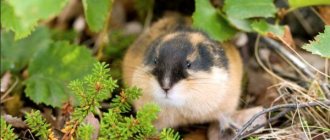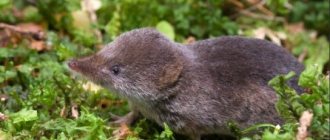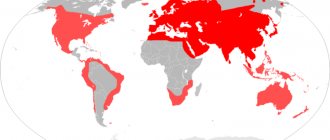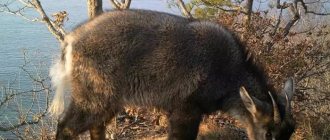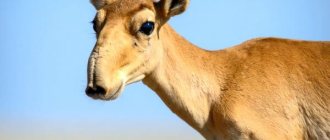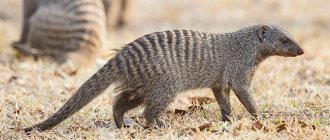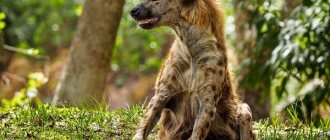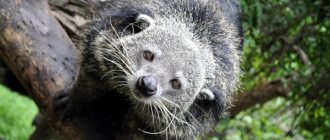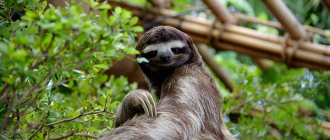There is a creature on Earth that few people know about. This animal is very rare and is listed among the endangered species. This is the Ili pika, a photo of which is presented in the article. It is sometimes also called the “magic rabbit” or haymaker.
The Ili pika is an animal of the genus of mammals of the pika family, where it is the only one and numbering 31 species. No one has seen this beautiful unusual animal for more than 20 years.
Characteristics of the pika
Externally the pika mouse is not very similar to typical representatives of lagomorphs. If only with a small, almost invisible tail from the outside. The front and hind legs are short and do not vary in size, as in hares. The ears are round in shape, usually not exceeding half the length of the animal’s head.
The same cannot be said about the impressive size of the pika's whiskers, which help it navigate the terrain and sense changes in the weather. The body size is larger than that of field mice - on average 15-20 cm.
The toe pads are mostly bare, but there are also species in which they are covered with bristly hairs. The coat color changes depending on the season: in summer it is brown or sandy-red, in winter it is plain gray.
Pictured is a red pika
Moreover, the skin of the pika is thin and unsightly, making it of no interest to industry.
Pika habitat
Pikas mainly on mountain plains, since the vast majority of species prefer rocky terrain. The mountains of Central and Central Asia, the rocky expanses of China, India, and Afghanistan have become ideal territory for pika settlements.
Colonies of animals are found in the Far East and in some regions of Siberia. In Europe, pikas are extremely difficult to see, with the exception of the eastern outskirts, which are favored by only one species of rodent. Two species have found a home in North America. As can be seen from the geography of pika settlement, the animals prefer places with a cold climate.
In the photo Ili pika
Steppe pikas dig numerous holes, similar to intricate labyrinths. Such dwellings can have many entrances and reach up to ten meters in length. The burrow usually contains both pantries for storing food supplies and cozy “nests” for raising offspring.
Those species of pikas that have settled in mountainous areas feel great, making shelters in rock crevices, under stone overhangs or among the web of roots of trees and large shrubs.
In snowy areas, pikas make their home directly in the snow, masterfully digging a hole in the shape of a ball, and carefully covering their new home with dried grass and small plant roots.
Pictured is a steppe pika
Origin of the species and description
Pikas have many common names, most of which apply to specific forms or species. The names mouse-hare are sometimes used, although the pika is neither a mouse nor a hare. The genus name comes from the Mongolian ochodona, and the term “pika” - “pika” - comes from the folk “piika” of the Tungus, a tribe from northeastern Siberia. The pika is the only living genus of the family Lagomorphs, whose members lack some of the special skeletal modifications present in hares and rabbits (family Lagoraceae), such as a strongly convex skull, a relatively upright head position, strong hind limbs and pelvic girdle, and elongated limbs. The pika family was clearly differentiated from other lagomorphs back in the Oligocene era. The pika first appeared in the fossil record during the Pliocene in Eastern Europe, Asia, and western North America. Its origin was probably in Asia. By the Pleistocene, the pika was found in the eastern United States and as far west in Europe as Great Britain. This widespread expansion was followed by a limitation of its current range. One fossil pika (genus Prolagus) apparently lived during historical times. Her remains were found in Corsica, Sardinia and neighboring small islands. Previously, the fossil material had been found on the Italian mainland. It was apparently still present until 2000 years ago, but was forced into extinction, probably due to habitat loss and competition and predation from introduced animals.
Food and lifestyle of the pika
Almost all pika species live in colonies. The population size ranges from hundreds to thousands of individuals, depending on the species and geographical habitat. Not being a predatory mammal, pikas eat all terrestrial vegetation that they can find within their habitat.
These are green stems of flowers and various herbs, plant seeds, and berries. Pikas enjoy eating cap mushrooms, lichens and mosses with pleasure. They easily endure unfavorable weather periods in their homes, eating hay that is carefully collected and dried on sunny days. Making hay is a special ritual for which the small animal is often called the hardworking pika .
The living conditions of these rodents dictate their own rules: in places where pikas live, there are much more cold days a year than sunny ones. Therefore, the process of preparing reserves begins in early spring, during the budding period of the plant world, and ends only in mid-autumn.
It is during this period that usually secretive animals can be seen and heard. With its sharp teeth, the pika cuts off the stems of plants and lays them out in a thin layer on heated stones, carefully mixing the dried grass to prevent the process of rotting; this also helps to protect the hay from drying out.
In steppe regions, winds often rise, but this does not frighten the thoughtful animal. Pikas prepare small pebbles in advance, which are subsequently used to cover the laid hay. The finished grass is stored in specially selected places - in crevices of crumbling rocks or dug storerooms, protected from winds and rains.
The pika puts everything that does not fit in the burrows into small stacks, shaped like real haystacks. Due to this feature, the pika is often called a haymaker. It is by the numerous mounds of dry grass that one can easily determine the settlement of pikas.
ordinary pyramid of hay does not exceed a few centimeters in height, but there is reliable information that alpine pikas can lay out “stacks” up to two meters high and weighing more than 20 kg.
Incredible, because the body weight of the animal itself barely exceeds 300 grams. Well, how can such fragrant mounds of other animals who are not averse to taking advantage of the fruits of other people’s labor not attract attention?
But pikas would not be pikas if they did not store hay for future use - both for food and for insulating their homes. Some northern species of pikas do not dry the grass, but put it fresh in their shelters.
In tundra areas, pikas build nests directly on the banks of lakes and rivers, or in driftwood deposits. It is not uncommon for animals to steal prepared hay from each other. Most species do not hibernate during the winter.
Pictured is an alpine pika
A sufficient supply of prepared food allows you to easily survive the cold winter without having to go outside in search of food. On warm days, pikas sunbathe, basking on warm stones and cheerfully whistling with the “settlers.”
But, unlike hares and other rodents, the pika never stands on its hind legs and does not assume a vertical body position. In case of danger, the animal emits a piercing whistle, and the colony freezes. The main threat to pikas comes from predators.
The most dangerous pursuers are stoats. Due to its small size and flexibility of the body, it is able to penetrate even into burrows. A bear that accidentally wanders into a pika settlement site is not averse to filling its stomach with animals. The population size is also influenced by various epidemics, which are not uncommon among rodents.
Mating season and reproduction of the pika
Pikas are mammals . Most of the animals live in family groups, in which there is a clear distribution of responsibilities for collecting grass and protecting the settlement from danger.
Pictured are baby pikas
Northern species of pikas breed once a year, while their southern relatives can produce offspring two or three times a year. The female's pregnancy lasts 30 days. After a month, from two to seven cubs are born. Heat-loving species give birth to naked babies.
In species that live in colder places, the offspring are usually covered with a thin layer of fur. It should be noted that, unlike hares, pikas are monogamous creatures.
What exactly did scientists discover?
Scientists have discovered the remains of three new species of ancient pikas, whose age is estimated to range from 10 to 51 thousand years. The location of discovery is the limestone cave Sukhaya, located a few kilometers from the village of Barabash (the largest village in the Khasansky district of Primorsky Krai).
The remains of bones and teeth of mammals were collected from the upper and lower layers of sediments located at the far end of the cave. The findings were then taken to the laboratory. The analysis showed that the found fragments do not belong to any of the pika species known to science. As Doctor of Biological Sciences, Professor Mikhail Tiunov , all representatives of fossil genera of pikas became extinct at the beginning of the Pleistocene (about a million years ago). Therefore, the greatest interest is not even the description of the three new species, but the fact that they were discovered in the late Pleistocene layers of cave deposits (126 thousand years ago - 11.7 thousand years ago).
“The find also suggests that the paleogeographic and climatic conditions of southern Primorye in the late Pleistocene not only allowed a number of species that had become extinct in other territories to exist for a longer period of time, but also probably contributed to speciation,” added Tiunov.
Article on the topic
Steppe Mickey Mouse. What songs do Orenburg pikas sing?
According to the scientist, the species and genus of pikas was determined by the structural features of the lower third premolar tooth; it is this tooth that is most often used in identifying and describing such fossil species. The analysis and description of this tooth allowed the researchers to understand that they were looking at a new species and genus for science.
